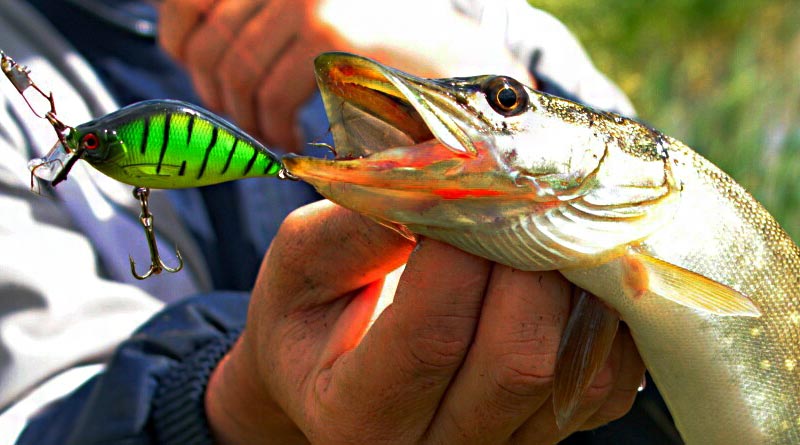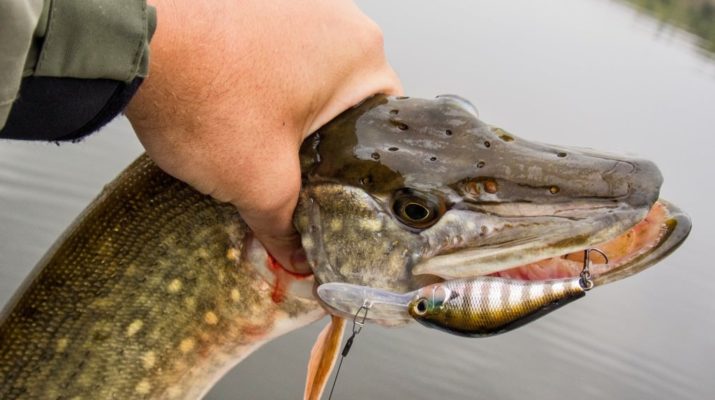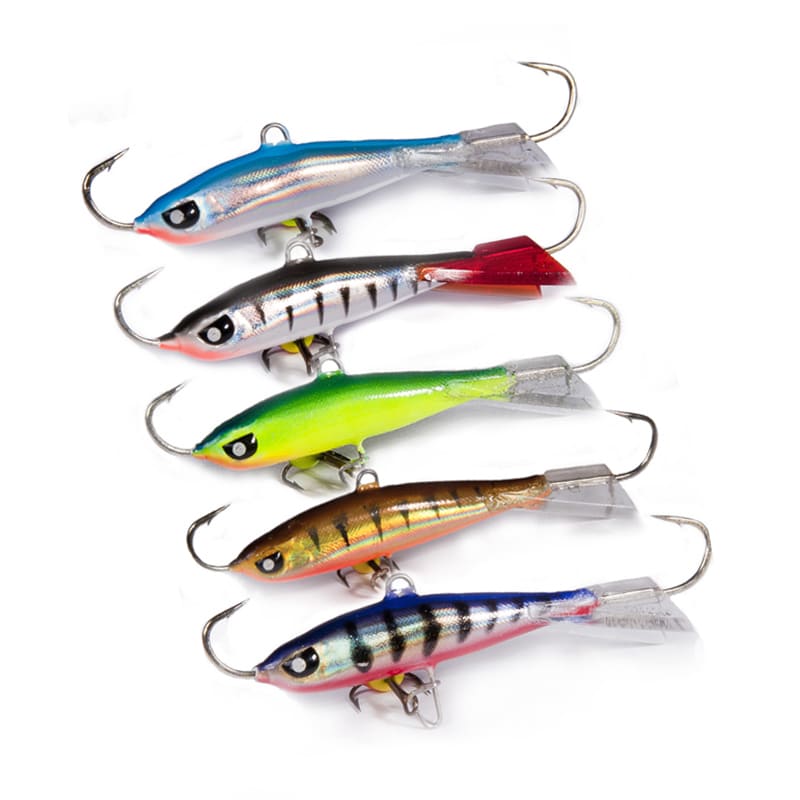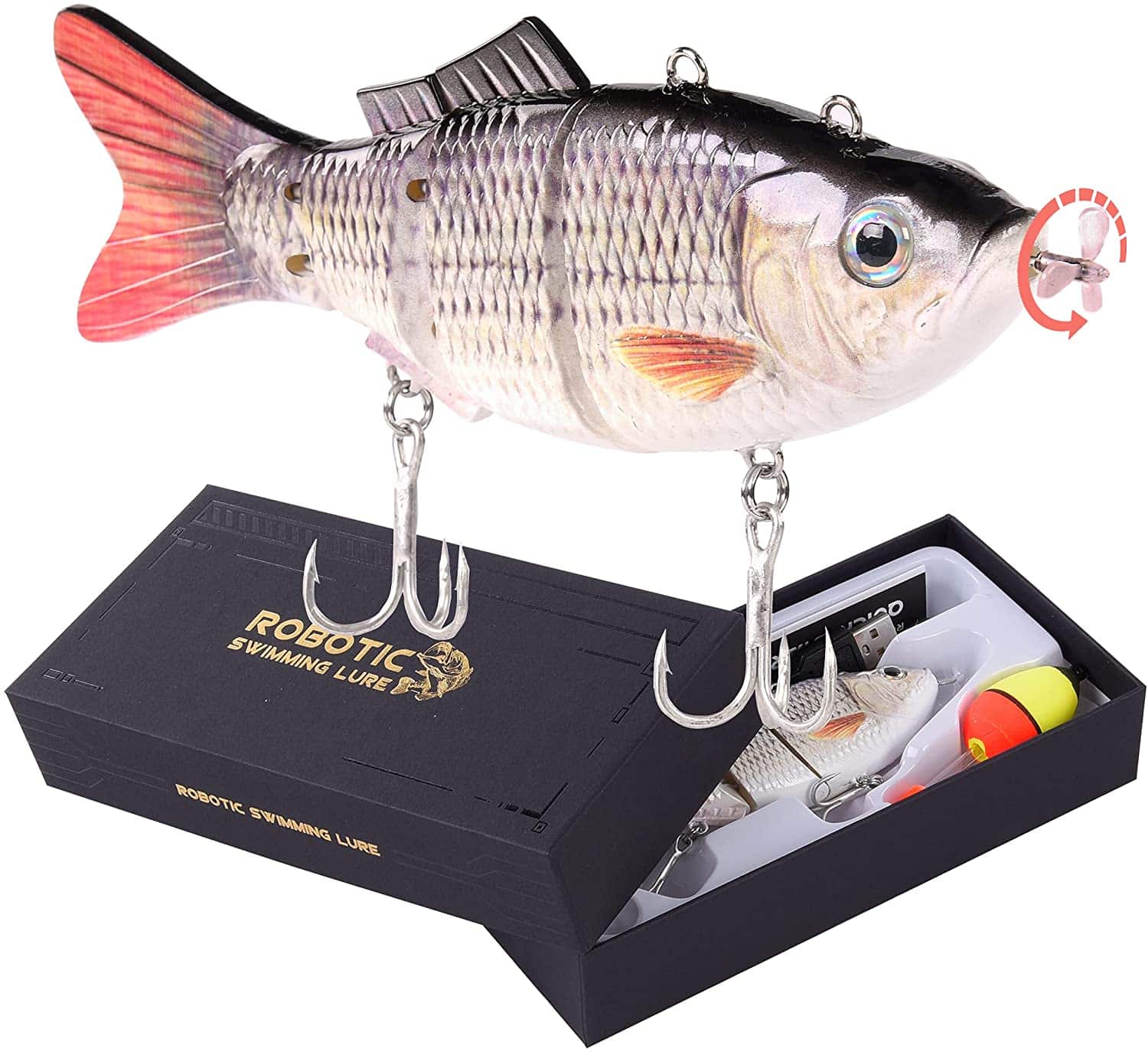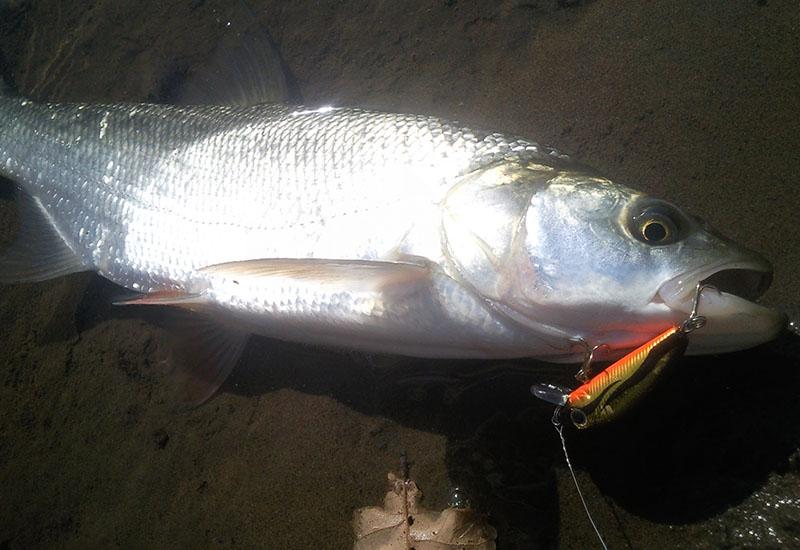Crankbaits (crankbaits, crankbaits, Crank – to stagger, fall over) are massive wobblers with an active and “tasty” own game on a uniform wiring. Forgive many flaws in the wiring, unlike minnow wobblers. It is this feature of the rolls that made them popular both among beginners and among professionals of spinning fishing, especially among
holophores and perchs. But not only chub and perch are caught on pot-bellied wobblers, pike also willingly takes on cranks, – it is important to know how to choose and serve a tasty treat of a striped beast correctly. Cranks are often called “idiot bates” (American) due to the fact that knowledge is not needed to successfully use such baits. Throw and pull. Unlike, for example, minnow.
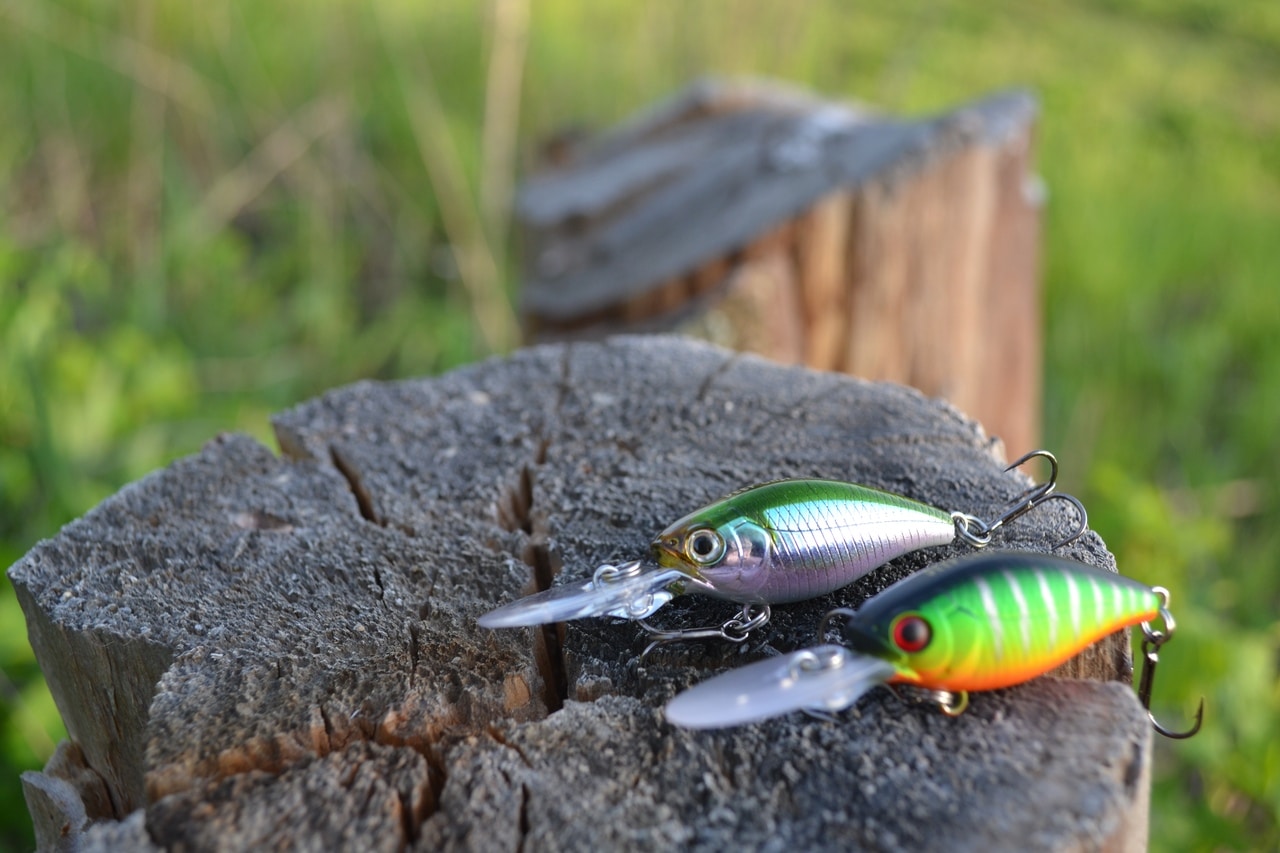
Interesting to know! At depths of 3-5 meters or more, deep rolls show better results than minnows, due to the fact that they are driven to the required horizon faster, they play more actively and are easier to animate at such depths.
- Briefly about krenki – a necessary educational program
- Fishing for pike on rolls: time and place of application, posting technique
- Where and when to fish: place and season
- How to catch: feed and wiring
- How to choose a catchy pike roll: general characteristics, top 10
- Tackle requirements
- Поделиться ссылкой:
Briefly about krenki – a necessary educational program
The main difference between rolls and minnows is that the former have a rich game on uniform wiring, and the latter only on twitch types of animation.
The following types of cranks are distinguished:
- Shad (herring) . A large group of elongated cranks (not always herring-like). Quite a large group. The activity of the game is not as significant as that of the fats. Often they overlap with the flat group, because some authors tend to combine shads and flat into one group of shads, as it is more numerous.
- Flat (Flat, flat) . Flattened cranks have a less pronounced play compared to feta. Often referred to as shads.
- Fat (Fat, fat man) . Rounds, drops, fatties are common names for this type of crank wobblers. They play very actively on the regular uniform. Vibrate and make noise. Fly very well in most cases.

Fishing for pike on rolls: time and place of application, posting technique
Catching pike on the rolls is successful, both during the usual casting in casting from the boat and the shore, and during trolling, when the bait moves evenly. And, as we found out, it is precisely on uniform wiring that crankbaits are especially good.
Trolling – always rolls, minnows don’t work.
There is no consensus on whether it is better to use rolls for active or passive pike. Thus, recognized experts Alexey Shanin and Andrey Pitertsov have diametrically different points of view on this matter. Alexey for active, Andrey for passive. How who went and who believed what. So it is in real personal practice. On the rolls, you can collect an active predator and go from zero to a passive one.
Where and when to fish: place and season
Crenkbaits are especially effective for warm water – medium spring-early autumn. During this time, the cranks are especially good at harvesting fish. But this does not mean that they cannot be used at other times of the season. In spring and summer, grass pike is caught on shallow and medium-deep cranks with different types of buoyancy depending on conditions. For deep places, deep-sea deep models of rolls are needed, some models with massive shovels allow you to beat off depths of 3-5 meters or more. In summer and autumn, when medium and large pike are kept deep, deep rolls are especially in demand. Where else is the use of pike rolls effective:
- Surface and shallow: oxbows above / along water lilies, nettles, along duckweed; river shallow waters; coastal vegetation zone.
- Medium depth up to 1.5-2 meters . Along the pits and coastal edges. On oxbows, lakes, when the pike is half-water. Areas where bays flow into rivers, dumps in depth.
- Dips from 2 to 5 meters or more . For catching river pits, channel edges, deep bays along the bottom.
https://youtu.be/OYbVKaBDYos
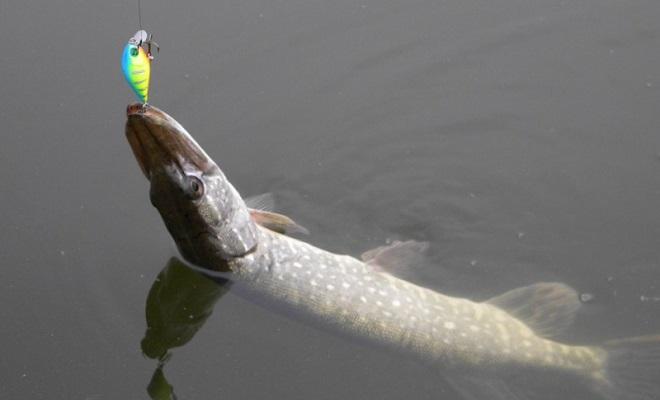
How to catch: feed and wiring
A specific bait should be selected based on the fishing conditions, the activity of the fish, the horizon in which it stands and weather conditions. The working depth is always indicated on the bait itself. The more passive the fish, the more passive the bait should be, with a lot of pauses and various slow stretches. For an active one, tweak wiring and its variations are suitable. The wires that are used when fishing for pike on the rolls:
- Basic drive – even drive from lazy / slow speed to fast, depending on the activity of the pike.
- Stop & Go . Uniform wiring with pauses and / or accelerations.
- Pulls and jerks of different amplitudes and frequencies.
- Twitch variations with pauses and periods of uniform animation.
When fishing from a boat, the following technology gives a good result: the angler stands at a depth and the deep crank diver throws under the very coastal edge. Thus, as it approaches the angler, the wobbler, gradually deepening, probes the entire coastal edge. We make the cast as a fan.
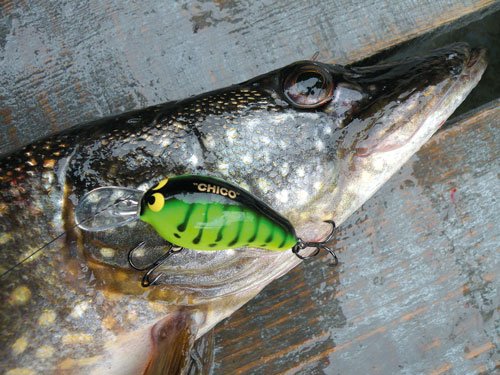
Three Success Factors ! First, it is important to vary the speed of the drive. Sometimes changing the speed gives amazing results. Second, it is also important to accurately determine the horizon in which the pike is standing. And to pick up such a crank so that it goes in the same horizon. For example, on a bottom pike, you need a wobbler that will literally strike along the bottom, get lost in the game and raise mud. The third: the most working option is crankbait wiring along the bottom of the reservoir, as if studying the relief with periodic teals and explosions from the bottom at pauses. This works especially well on popup models. Many of the suspenders among the rolls in fact turn out to be slowly pop-up – that’s it!
Fishing for pike on the rolls – video from the recognized expert spinning rod Alexey Shanin: https://youtu.be/szsutPHsBx4
How to choose a catchy pike roll: general characteristics, top 10
Consider the main characteristics that a roll for pike fishing should have:
- Rolls should be selected with a massive shovel and body, as well as relatively small anchors. Pike often have to be caught in snags, among stones and along the edge. To minimize the number of hooks, as well as the likelihood of breakage, crankbaits with sounded characteristics should be selected.
- Cranks with high-amplitude and medium-amplitude active play are more in demand. This is the kind of game that the toothed beast loves.
- Workmanship. Everything is simple here – low-quality Chinese and / others like them do not work well, and do not live long in sharp pike fangs.
- Equipped with a long-distance casting system.
- River pike often stands at the edge of different streams. Therefore, the crankbait should keep the current and its change well, both in strength and direction. Don’t fall on your side.
- Required different wobblers for different working depths. They work well at depths of 0.5-1; 2-3 +; 4-5 meters.
- Need quiet and thundering crankbaits. Noisy to collect active fish, quiet to passive.
- Cheap rolls usually catch worse than proven, but more expensive ones. The reasons are the same. They do not hold the jet, the game fails, they fly poorly, the degree of vibration differs from copy to copy, poor quality of materials and, as a result, loss of performance characteristics after one or two bites, etc.
It is necessary to have rolls – from surface ones for catching grass on flooded lakes and oxbows over kushvinka and nettles, to deep models for catching eyebrows, dumps and holes.
Acid and bright colors are used on muddy and deep water, and various natural colors on transparent ones. In practice, fishing often gives a sharp change in the color of the bait. That is, we train the pike to attack with a roll in one color, then we put another in a completely different color (natural / acid, yellow with red / green with black, etc.). This often provokes a passive pike to attack. TOP-10 rolls that are worth having for pike fishing (in the must-have set we will include different types of cranks from different price ranges – each according to preferences and affordable):
- Lure OSP DUNK Suspend . the depth is 0.5-4 meters, which is a very good indicator for a 5 gram bait. Small shad dips roll (Western European herring). Very aggressive wiring play. You can literally dig a curb along its dump. It has a very powerful and sturdy shovel that can withstand the aggressive action of sand and stones. A massive shovel and a large slope of the bait during the drive allows it to play the role of a non-hook in strong places. Very good for bottom pike. In this case, the wobbler is conducted with striking along the bottom and pauses for small separation from the bottom (but you don’t need to plow the bottom!). Thus, the angler, as it were, studies the bottom topography on each cast. The lure sets wide glides when navigating and creates a flickering effect, which, in principle, is not typical for shad rolls. But OSB Dunk is an exception.
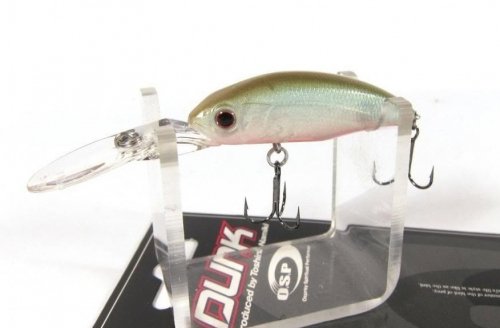
- Daiwa Tournament SPIKE 53SP . In form, it resembles OSB Dank, but twice as expensive as 500-600 against 1200 rubles. Has a long-distance casting system. Sets wide and low-frequency glides that are able to stir up even a passive pike and bring it out of its daze. Recommended depths are 2.5-4 meters. It is good to fish on the edge, pits, dumps, point elevations at the bottom of the reservoir. You need to start driving the wobbler to the required depth 5-10 meters before the promising place. Postings – stop-and-go, uniform, wavy, chaotic twitching.
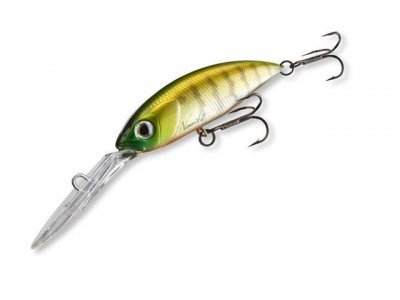
- Evergreen CC Predator SP . 7.5 g, 60 mm. There is a long-distance casting system. Nice but pricey shadk from Evergreen. The working horizon is up to 3 meters. Has a higher frequency game than Dive Spike. The amplitude of the glides is smaller. Good at twitch, if you pick up skillful strength of jerks, it will spin in almost one place, like a loach in a frying pan. On the pike, the roll is good at a combination of uniform and twitching, where there is a pause of 2-3 seconds between animation variations.
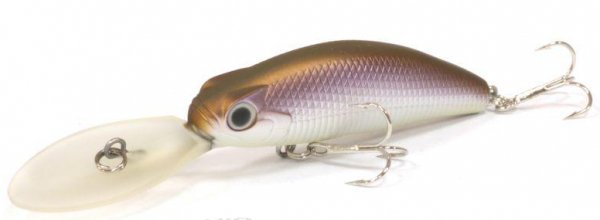
- Kosadaka Kurado SH 60F; XL 60F; DD 60F , 7.5 grams, 60 mm – a series of budget crank wobblers, the line of which covers the depth range from 0.5 to 4 meters. Depending on the model, you can “mow” the grass pike on a uniform surface and half-water or tap the bottom with a dip model in search of a trophy. Of the minuses, it is quite picky about the wiring, since with an inaccurate twitch it gets lost from the game and falls to the side.
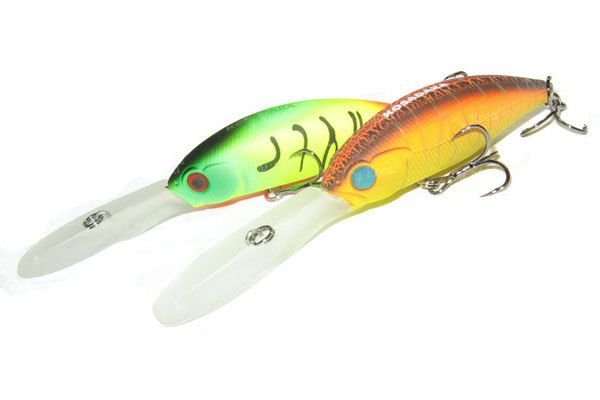
- YO-ZURI 3D Flat Crank , 7.5 grams, 55 mm. One of the most famous flat. And there are stories about the “Gray-haired” coloring (pictured) – the gray-haired mowed down the entire crop on the lake, without a gray-haired there is no point in going fishing, etc. Noisy and floating. 3-D technology from YO-ZURI – embossed holography inside the polycarbonate case shimmers with all the colors of the rainbow. It looks very much like a broad-bodied fish – silver bream, blue bream, crucian carp. Slow uniformity with pauses and light movements on pause. Yuzuri 3D flat crank does not require special twitch skills and is suitable for beginners.
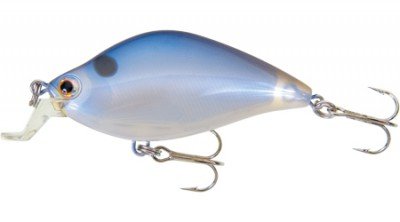
- Jackall Bling . 55 mm, 9.3 grams. The weighty Dzhakalovsky crankbait is good for pike and large perch. stop & go. Of the recommended animation types, short jabs and pulls, monotonous uniformity is often the best option. It collects pike very well from a depth of up to 4 meters on a regular uniform, with a real depth of up to 1.5 meters.
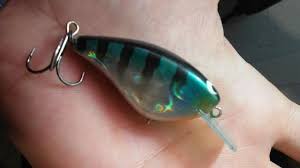
- Lucky Craft Moonsault all model range from 5.5 to 6.2 cm, 8.2 to 14.6 grams and from 0.1 to 4 meters depth. Little known, but very successful roll. Balanced roll with an interesting noise effect of grinding sand between the boats. From postings light twitch, uniform or stop’n’go. Slowly pops up on pause, which can be used on a passive pike.
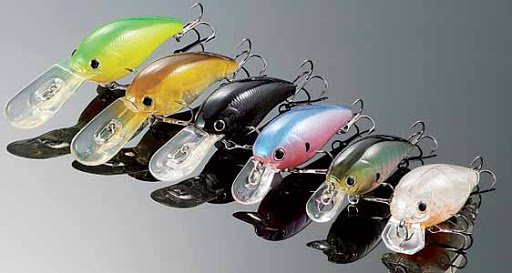
- Jackall Cherry 44 and jackall Cherry dd . 5.5, 11.2 grams weight. Medium deepening universal and deep version of the famous wobbler (perhaps after chabik) from Dzhakal. The main wiring is lazy uniform and uniform with pauses. Bites are mostly paused. 44 model for medium water, deep well to hit on the bottom of the edge and drop-offs. A very sweeping and noisy game. It collects fish well from dalnyak even in muddy spring water.
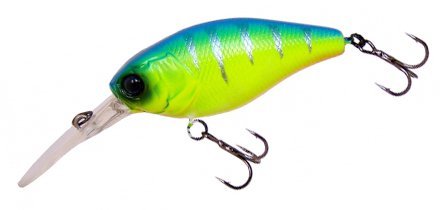
- Tsuribito Super Crank 50 and 60 SR . 5, 6 cm and 7, 12 grams, respectively. Another budget fat man who loves to eat pike. Creates a thud on the wiring, which is to the liking of the pike. They are good at depths of up to 2 meters. Along the oxbows along the water lilies, at medium depths on a slow current. On a fast current, it falls on its side. The animation is uniform, even with pauses, twitch jerks of 15-20 cm with pauses of 1-3 seconds.
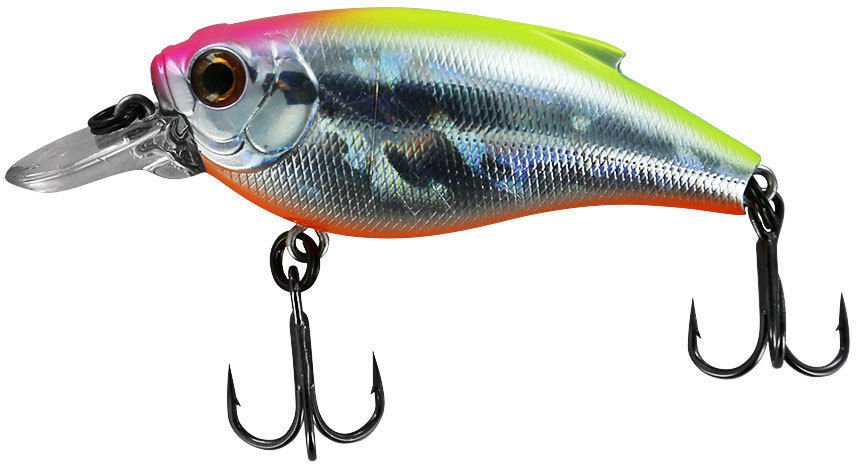
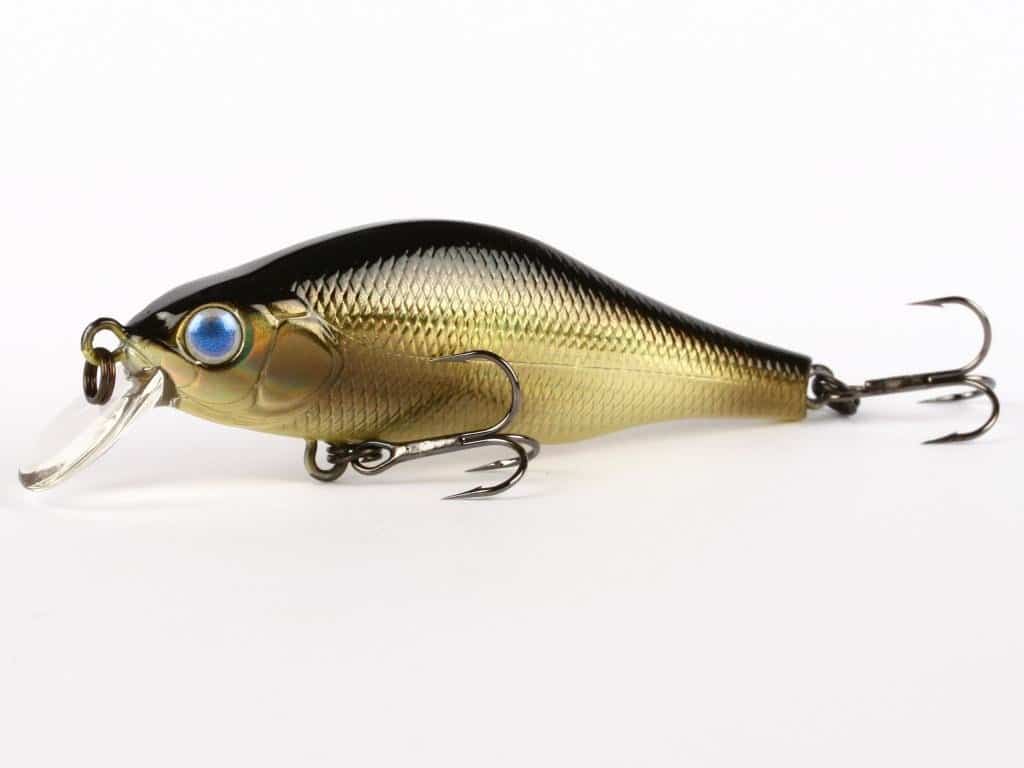
We also note the following models that were not included in the TOP-10, but which are worthy of it:
- OSP BLITZ MR – deepening up to 3 meters, weight under 10 grams, quiet.
- Megabass Deep X-300 is a deep-sea pike crank diver, depth up to 6 meters.
- Megabass Deep X-100 – deepening up to 2-3 meters.
- Salmo Hornet is a public sector employee, of the minuses it flies very badly
- Rapala Shad Rap is another budget employee, available in impressive sizes.
https://youtu.be/k8pS_3e8WEo
Tackle requirements
For fishing on rolls, it is good to use parabolic blanks, which have a relatively soft middle and butt and a hard tip. Due to the fact that rolls are relatively rarely used on hard twitch lines, a fast rod is not required. But, playing out the toothed tooth will be easier on a knitting blank. There is one more nuance from the area of comfort. Large rolls, when posting on a hard fast blank, literally tear your hands apart with vibration. By the middle of the day, hands can literally start shaking by themselves. To avoid this you should:
- Use a parabolic blank.
- Use an expandable fluorocarbon instead of a braid, at least as a leash.
- Use a multiplier instead of a spinning reel.
But buying a multiplier purely for rolls is an expensive pleasure, so you should think about how to comply with the first two points.
